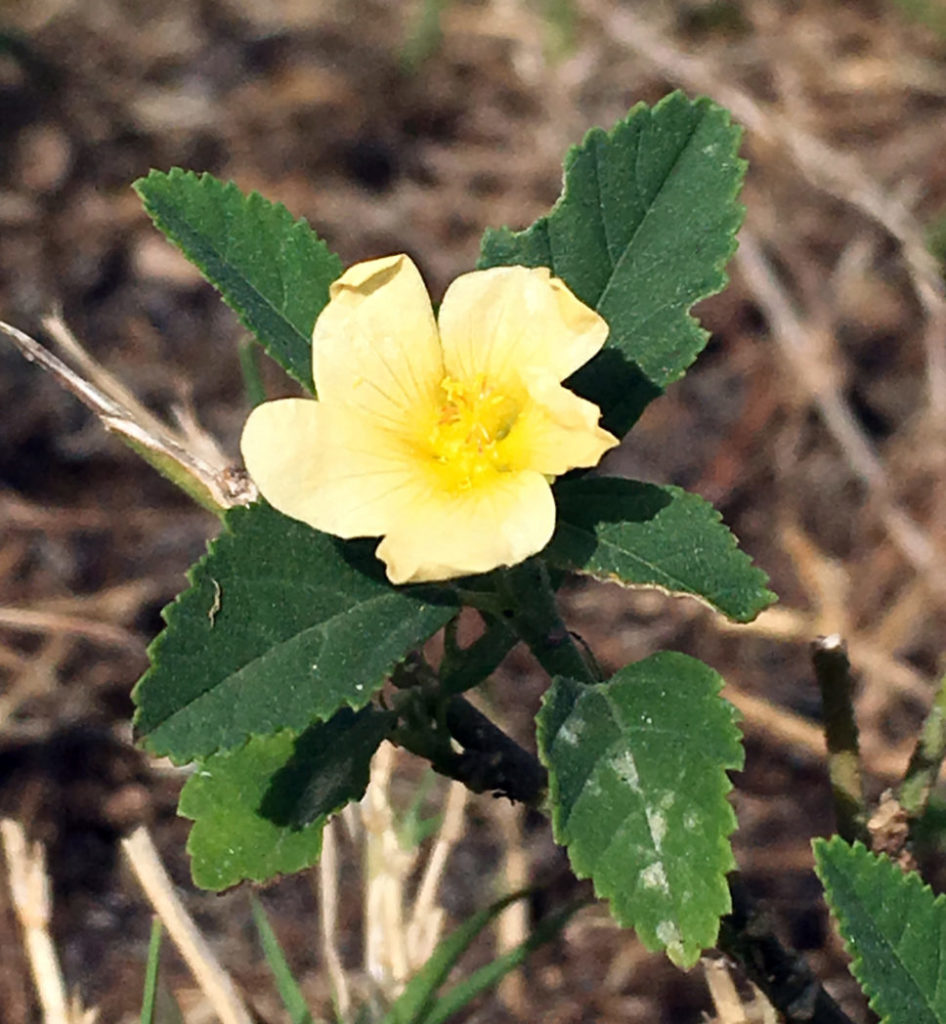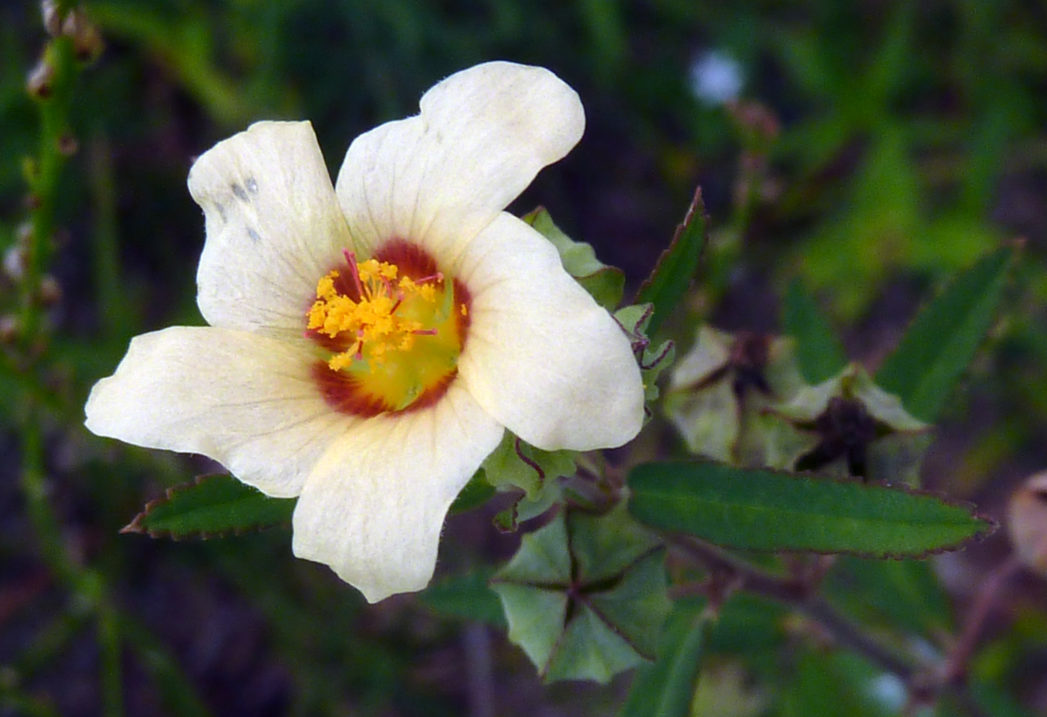Fanpetals
Pictured above: Cuban jute (Sida rhombifolia) by Eleanor Dietrich. Click on terms for botanical definitions. View post as a PDF.
Fanpetals (Sida spp.) are a genus of annual and perennial wildflowers. Of the 11 species of Sida that have been vouchered in Florida, only five are native. The most common native species are Common fanpetals (Sida ulmifolia) (pictured below) and Cuban jute (Sida rhombifolia) (pictured above). Flowers are usually five-petaled and pale yellow to deep yellowish-orange. Petals are often notched or lobed and may be reddish-orange at the base, particularly in S. rhombifolia. Sepals are hairy and also occur in fives. Leaves are either unlobed with serrated margins or lobed. Fruits are disc-shaped schizocarps, divided into sections that each section contain one seed. Stems may be herbaceous or woody.

Fanpetals can bloom year-round and are attractive to butterflies and moths. They occur in dry uplands as well as ruderal and disturbed areas.
Fanpetals are in the same family as hibiscus, okra, cacao and cotton.
Family: Malvaceae (Mallow family)
Native range: S. ulmifolia occurs throughout the peninsula and in a few Panhandle counties. S. rhombifolia is found throughout most of the state.
To see where natural populations of all Sida species have been vouchered, visit florida.plantatlas.usf.edu.
Hardiness: Zones 8A–10B
Soil: Dry, well-drained sandy soils
Exposure: Full sun to partial shade
Growth habit: 3’+
Propagation: Seed
Garden tips: Fanpetals are best for naturalistic landscapes and restoration sites as they can be weedy. They are drought- but not salt-tolerant.
Sida plants are often available from nurseries that specialize in Florida native plants. Visit www.plantrealflorida.org to find a nursery in your area.

